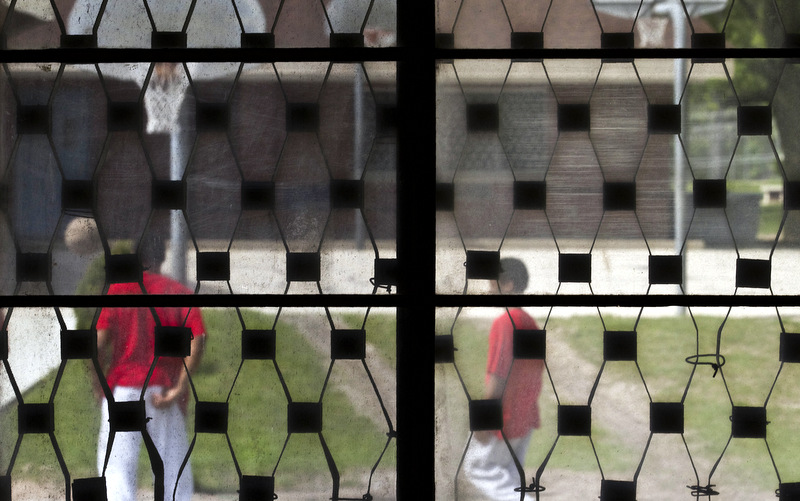
In June 2012, the U.S. Supreme Court ruled that even juveniles convicted of murder cannot be subjected to life in prison without the possibility of parole, except in certain circumstances.
Though the court deemed such a sentence for a child “cruel and unusual punishment,” it didn’t ban it outright. Two years later, the United States continues to be the only country in the world that sentences those under the age of 18 to life in prison without parole.
Much to the dismay of human and civil rights groups who called the decision to sentence children to die in prison unconstitutional, current estimates show there are 2,570 children, including some as young as 13 years old, who are expected to live the rest of their lives behind bars.
Hoping to release some of these children from a life behind bars, the American Civil Liberties Union, Human Rights Watch and the Human Rights Institute at Columbia Law School filed an amicus brief before the Inter-American Commission on Human Rights on March 25.
The brief asks the organization, which oversees the human rights obligations of its 25 member countries, to address the U.S. process of prosecuting children as adults, or adultificiation. The groups argue in the brief that by continuing to prosecute children as adults and sentencing children to life without parole, the U.S. is violating its obligations under the Charter of the Organization of American States and the American Declaration of the Rights and Duties of Man, which the U.S. signed in 1977.
Human Rights Watch noted that the U.S. has not ratified the American Convention on Human Rights as part of its membership in the Inter-American system, which “requires countries to provide children with special measures of protection, recognizing that their incarceration should only be used as a last resort and for the shortest duration, and that children are entitled to a proportionate sentence, to rehabilitation, and to be free from discrimination, among other rights.”
Juvenile justice laws emerged in the 1800s, but it wasn’t until the early 1900s that age became a factor in how the justice system would determine the appropriate punishment for a crime. Even terms used to describe those who committed crimes began to change, such as “criminal” for adults and “delinquent child” for juveniles. This change came after it was widely believed that children committed crimes due to a lack of parental care and control, and the government felt that a rehabilitative form of punishment would be best suited for children.
According to Florencio (Larry) Ramirez, a former children’s court judge of the Third Judicial District Court in Las Cruces, New Mexico, the idea behind a separate juvenile justice system was to “minimize, not eliminate, the use of secure detention since there are some children for whom detention is appropriate.” But Ramirez noted that “it is clear that detention of juveniles has been used inappropriately in many cases.”
For example, Flint, Michigan, resident Juwan Wickware was 16 when he was involved in a robbery that ended in the death of a local pizza delivery man in 2010. Even though Wickware was carrying a gun, prosecutors knew Wickware didn’t kill the pizza delivery man because a .40-caliber pistol bullet was found inside him. Wickware had a .22-caliber rifle.
But under Michigan state law, an individual can be convicted of felony murder even if they are not directly responsible for killing someone. Wickware, who had no previous convictions, was found guilty of felony murder and sentenced to life in prison without parole in 2012.
“If you’re in concert, or you’re engaged in a plan, and a murder results, they find that you’re involved in a felony murder,” said Deborah LaBelle, an attorney with the ACLU. “Even if you’re not the person who committed the homicide, you get the same sentence.”
Wickware’s friend who is believed to have shot the pizza delivery man was found not guilty after a woman who was in the delivery man’s car reported seeing a third person that night.
Part of the reason there are laws — like the one in Michigan — that allow juveniles to be charged so harshly is the increase in juvenile crime rates, particularly that of homicides, during the 1980s and early 1990s. Many conservative lawmakers said they had enough with the “soft approach” of rehabilitative programs and began to pass laws making it easier to try juveniles in adult criminal court.
Between 1992 and 1997, 44 states and the District of Columbia passed laws facilitating the transfer of juveniles to the adult system, and at least two states — Vermont and Kansas — provide statutory provisions for trying children as young as 10 years old in adult criminal court.
“Rehabilitation is a myth in juvenile detention centers,” Ramirez said about our current “tough on crime” juvenile justice system.
He added that due to a lack of funding and resources, many youth sent to overcrowded juvenile detention centers don’t learn to improve their social skills or get help finding a job or obtaining a high school diploma. Instead, they get lost in the system and become suicidal, and suffer from stress-related illnesses and psychiatric problems.
Since the ACLU believes life behind bars without parole violates policies under the United Nations Commission Against Torture and affects minorities more than white youth, which is a violation of the Convention for the Elimination of Racial Discrimination, the group is asking for the sentence to be banned outright for juvenile offenders.
“It undermines the country’s human rights record and position in the world,” LaBelle said. “It deprives them of moral authority when they’re willing to throw children in prison until they die.”
Ramirez echoed this sentiment.
“What is necessary is the courage to reallocate the resources used for detention into programs that truly address the causes and conditions of delinquency,” he said. “It is clear that where the focus is solely on punishment and deterrence, the problem only grows larger.”

